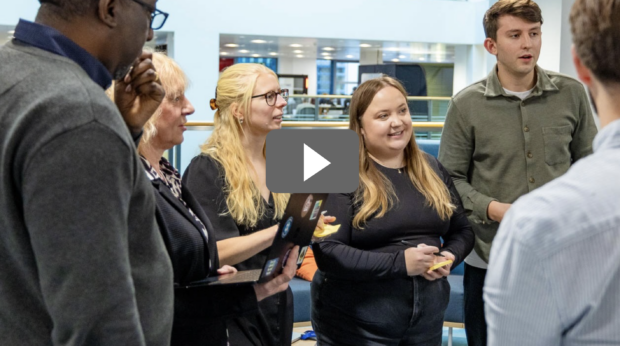
Every year thousands of planning decisions are made which shape the future of where we all live, work and visit. They determine which developments are approved and how our places evolve. Yet this crucial data is stored in different ways and in different local authority systems across the country, making it difficult to access and analyse the data, understand patterns, track housing delivery and build new data-driven tools.
That’s why in our last blog post, we set out how we are expanding the scope of our data specification work to cover the whole planning permission process and are beginning to work on standardising planning application decisions. This focuses on the point at which a local planning authority makes a decision, and a decision notice is published.
This is a crucial next step because it records the outcome of the planning permission process. Aligning submission specifications (input) with decision specifications (output) will encourage a consistent flow of quality data throughout the system.
Key differences in decision specifications
While closely aligned with submissions, there are key differences:
- Purpose: Submissions are for validating and assessing a proposal; decisions are for recording what has been decided.
- Users: Submissions are primarily for applicants and planning officers; decisions serve a broader audience, including monitoring teams, developers, and policymakers.
- Focus: Submissions are about input; decisions are about recording outcomes.

Why this matters
This work matters because standardised decision data serves everyone involved in the planning ecosystem.
It means that:
- local planning authorities have better, consistent oversight of their decisions and share their data more easily for regional and national monitoring
- central government can more easily monitor and track things like housing delivery
- developers can easily access the data, understand patterns, across administrative boundaries
- property technology companies can build smarter tools that work across England based on reliable standardised data
- communities can gain insight into the developments taking place in their area and how decisions are reflecting their interests
Our approach
We've started by revisiting an early working draft from 2022 and are now drafting a new data model, aligning it with our submission work. Unlike submissions, where we had existing forms to work from, for decisions, we're starting small and only adding elements when a clear need is evidenced.
Here are some principles we are following for the decisions specification(s):
- Include only what we’re confident adds value.
This means no filler data. Every field must have a clear use case.
- Validate every addition with real needs.
For example if you need things like dwellings-count or developer engagement details, tell us, and we can include that.
- Break things into connected, reusable parts.
In the same way as we have with submission specifications, breaking things up into smaller, modular data components will mean specifications are easier to maintain, reuse and mandate.
- Avoid asking for information that can be inferred from data.
Rather than asking for applicants to calculate things where we could get systems, compute them with appropriate input data.
How you can shape this work
The benefits of getting this right extend far beyond just having neat and tidy data. Specifications which standardise our decisions data will transform our understanding of how the planning system is working in England and help us all to better understand how our places are changing.
We are kicking off a research project to understand exactly what decision data is needed and how people want to use it. This is where we need your expertise and experience. Please complete our survey and share your requirements and use cases.
We will be discussing the initial findings from the survey in our open data standards community meeting at 10.30am on 20 August. Please register to receive an invite to this session.
The best specifications are built with the people who use them, so please keep feeding in your insights – we're eager to collaborate with you to get this right!
Keep up to day by following the Digital Planning programme, on LinkedIn and subscribing to the newsletter.



Leave a comment